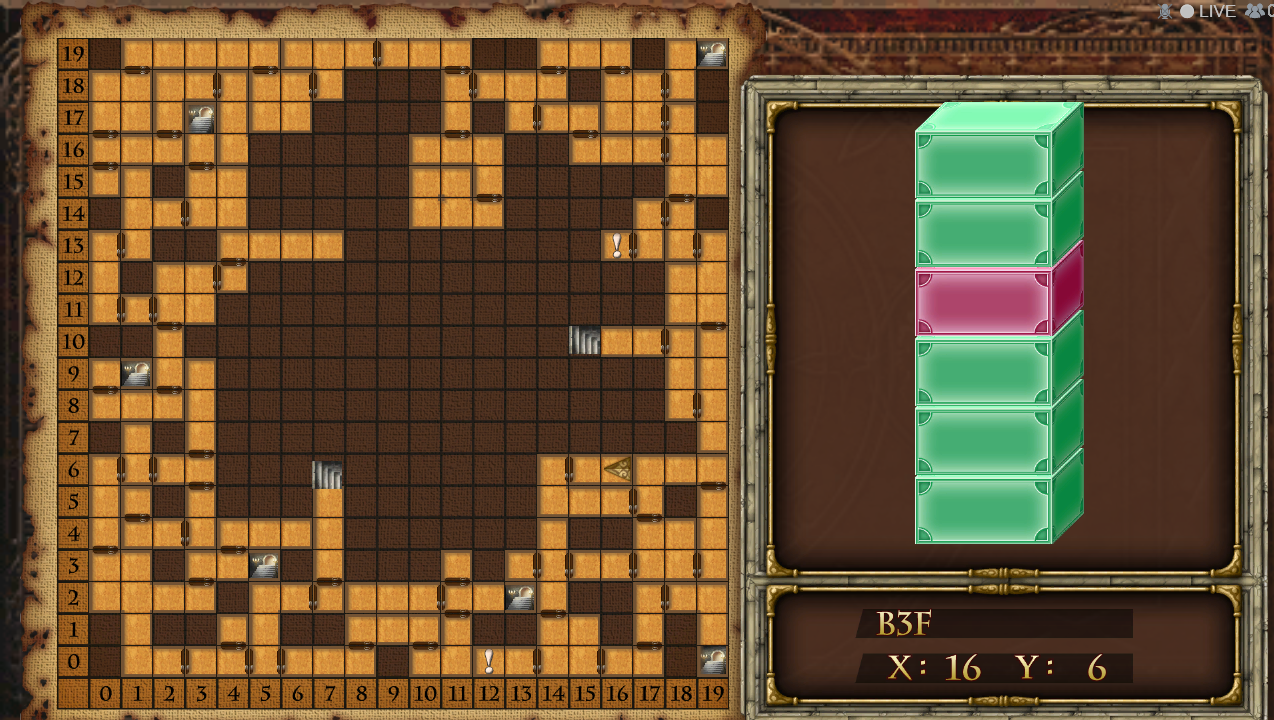

- #Elimage gothic ifinite magic maps Pc
- #Elimage gothic ifinite magic maps license
- #Elimage gothic ifinite magic maps series
- #Elimage gothic ifinite magic maps psp
As a minor bit of irrelevant trivia, quite a few of the developers would eventually work on Kingdom Hearts III.
#Elimage gothic ifinite magic maps Pc
An updated re-release was released in 2013 with a few extra enemies and various quality of life features that sadly never made it to the PC version. In 2014, Elminage Gothic would receive a PC port and English translation courtesy of Ghostlight, who is probably best known for distributing various Megami Tensei games in European territories. Opera House, founded by Satoru Miki and Hiroyuki Fujiwara, has an extensive history dating all the way back to 1989, being responsible for porting various SSI published games such as Eye of the Beholder to the PC-98, the PC Engine CD port of Shin Megami Tensei, the Super Famicom Kyuuyaku Megami Tensei compilation and the PC-98 conversion of Wizardry 7: Crusaders of the Dark Savant. Pleocene seems to have been a relative newcomer at the time, though they would later on assist during the development of Monster Hunter Generations, Dragon Ball Xenoverse and Professor Layton vs Phoenix Wright. From what I can be gather, we can trace the internal staff's contributions as far back as Wizardry Empire III, such as with dungeon designer Takahiro Ando, scenario writer Takahiro Matsuya and monster designer Takeshi Miyauchi.
#Elimage gothic ifinite magic maps psp
Initially released in 2012 for the PSP (just 4 months before Ibun, for the record), Gothic was jointly developed by Starfish's internal staff, Pleocene and Opera House. The focus on this already excessively long ramble will be the 4th installment, Elminage Gothic. Nevertheless, we would see a continuation of the Wizardry Empire line in the form of the Elminage series, which lasted from 2008 to 2012, with the release Elminage Ibun, not counting ports and re-releases.
#Elimage gothic ifinite magic maps license
At the risk of engaging in unwarranted speculation, this may have something to do with the fact that the license was transfered from 1259190 Ontario to Aeria IPM (later known only as IPM) in 2008. After the release of Wizardry Empire III (which is either the 5th or 6th Empire game, depending on how you count Wizardry Asterisk) for the PSP in 2007, Starfish seemingly lost the rights to the Wizardry license. The year 1999 saw them releasing Wizardry Empire for the Gameboy Colour which slavishly followed the design of the first five mainline Wizardry games while adding their own additions on top of that.
#Elimage gothic ifinite magic maps series
Starfish was founded in 1993 by former Hot-B employees, probably best known for the Black Bass series of fishing games and scrolling shooters like Cloud Master and Steel Empire. They would eventually license out the series to Sirtech Canada (the developers of Wizardry 8, released in 2001), as well as ASCII and Starfish, to name a few (in fact, the copyright notices in Wizardry: Dimguil and Wizardry Empire both mention 1259190 Ontario Inc.). It should be noted that in 1998, the rights to the Wizardry IP, along with their other assets, were transfered from Sirtech to the oddly named 1259190 Ontario (also owned by the Sirtech founders) around the time the American branch of Sirtech closed its doors. ASCII would soon be joined by Starfish in the development and publishing of original Wizardry titles, with both companies releasing their output somewhat concurrently with each other from 1999 to 2007 or so. ASCII would go on to release the first 5 games on Japanese home consoles and computers, eventually leading to the the creation of Wizardry Gaiden: Suffering of the Queen in 1991, kick-staring the lineage of Japanese developed Wizardry games that would outlast even Sirtech themselves. In 1982, developer and publisher Sirtech was approached by both Starcraft and ASCII Corporation for the localization and distribution of Wizardry games in Japan. Released in 1981 for the Apple II as a commercial adaptation of the type of games seen on American university terminals, the first entry quickly garnered a devoted following, ensuring its influence on future RPGs going forward, including those developed in Japan. Old traditions have a tendency of persisting far longer than one would expect and no computer role playing series is more of an indicator of undying traditions than Wizardry and its direct descendants.


 0 kommentar(er)
0 kommentar(er)
